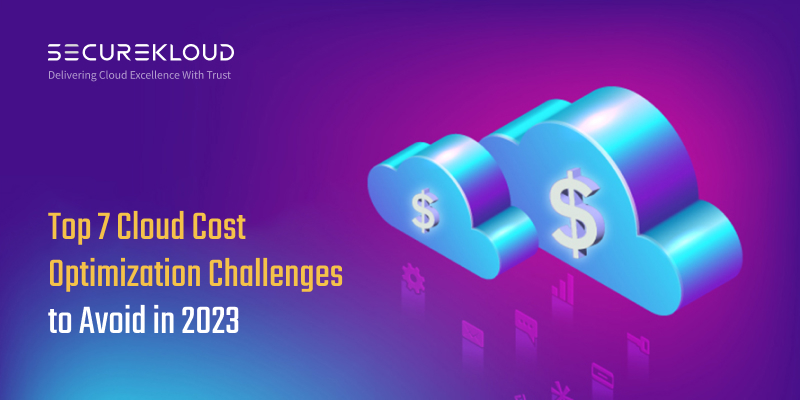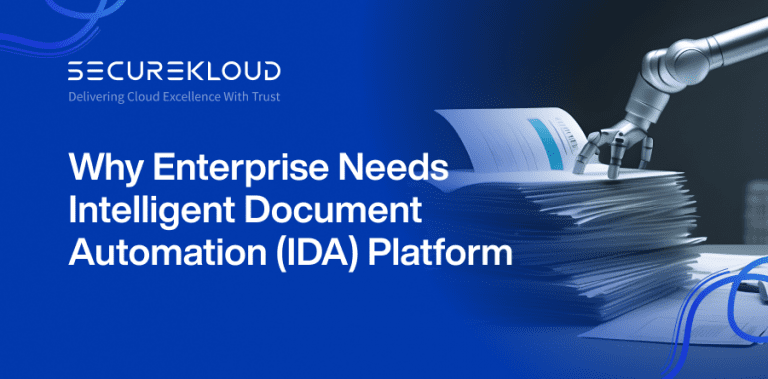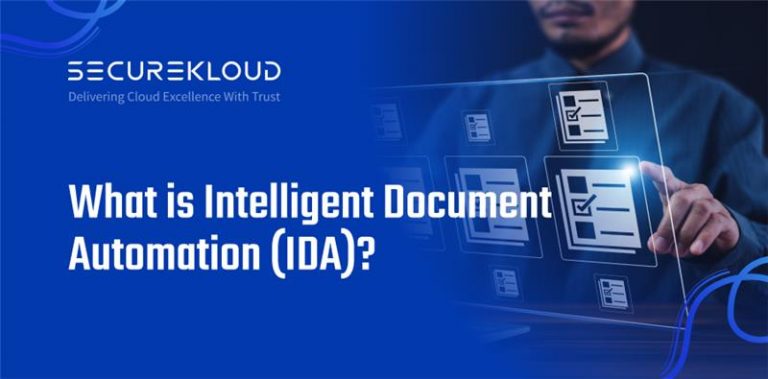- 7Minutes
- 1253Words
- 3Views
Being in the cloud automatically means that you are saving money – but is it true? Let’s find out from these stats. As per the Flexera 2022 State of the Cloud report 59% of companies had plans to optimize their existing cloud costs. Additionally, a McKinsey report states that “Around 80% of enterprises consider managing cloud spend a challenge.” Hence, it is true that managing your cloud costs can be a complex affair.
The numbers stated above are startling and certainly depict a negative picture here. Now it’s time for you to think if your cloud move has just added to your costs. If your answer is a ‘Yes’, why do you think your organization is still grappling with mismanaged costs? Before exploring some of the top cloud cost optimization challenges and tips to solve them, let’s understand the several cloud business units associated with costs.
- Networking costs
- Data transfer costs
- Object storage costs
- Computing costs (associated with CPUs, RAM, etc.)
In fact, managing these costs is a complicated task, as resources begin to develop in the business account and enterprises fail to follow proper cost management practices. Now, let’s discuss the top seven cloud cost optimization challenges and some proven solutions to knock them out.
Cloud Cost Optimization Challenges You Need to Deal With
1. Low visibility
Lack of visibility into cloud spending has direct cost implications and is one of the main challenges affecting cloud cost optimization. So, what happens when you can’t accurately view the cloud spend data over time or are unable to monitor and manage the cloud computing resources? It results in the unchecked proliferation of cloud services, or cloud resources, referred to as cloud sprawl, a constant issue that businesses face. Moreover, the failure to track the cloud resources makes it difficult to take up cost-related decisions.
To resolve these issues, consider investing in a cloud cost optimization partner capable to give you more insights into your cloud expenditures with a holistic view (dashboard) of all cost centers in your cloud. The right cloud cost management partner can help optimize, monitor, and manage your cloud resources, thereby eliminating any hidden costs associated with the cloud.
2. Over-provisioning of cloud resources
It is always ideal to anticipate the requirement of cloud resources for your enterprise, the failure of which can lead to unnecessary cloud costs and inefficiencies. Over-provisioning refers to acquiring more resources than the actual requirement to run your business’ workloads. With over-provisioning, several cloud resources remain idle, and you’ll be forced to pay for them, leading to unwanted expenses that can spiral out of control.
As over-provisioning takes its toll on cloud waste and costs, it’s essential for your organization to develop a ‘pay for what you need’ approach. How to deal with over-provisioning? It’s advocated to invest in custom monitoring cloud cost management solutions, auto-scaling, and rightsizing resources can help save on cloud spend
3. Complex, multilayered billing and cloud cost breakdowns
Generally, cloud bills are not comprehensive, perplexed with complexities and technical jargon. In addition, it becomes more complex when you use a multi-cloud or hybrid-cloud model. With a constant change in billing practices, your cloud invoices can differ from month to month, making it difficult to build “budget vs. forecast vs. actual usage” comparisons. Even Gartner’s report suggests that “95% of business and IT leaders find cloud billing the most confusing element of using public cloud services.” Also, major public cloud platforms provide billing structures that are multilayered and challenging to understand. They also lack standardized billing models which add to the complexity.
An experienced cloud cost optimization partner can help in reviewing your batch of cloud bills on a regular basis. By breaking down the cloud bills, they help you identify cloud wastes and make fruitful changes to optimize your cloud spend.
4. Poor cloud architecture
AWS Well-Architected Framework released by AWS helps cloud experts to develop secure, reliable, and scalable workloads. But most AWS users are not aware of this process due to which their applications would be exposed to cyberattacks, unauthorized data access, and even data loss. Furthermore, on the application front, developers’ lack of skills could lead to a poorly designed cloud-based application that fails to capture the true value of cloud. Mostly the development team faces difficulties in identifying the most cost-effective means to build an application. This is because the same application can be developed using different architectures and components in varying price ranges.
5. Conflicting cloud cost savings plans across teams
A misaligned cloud cost optimization approach between your teams can make all your efforts go in vain. When each team of your organization follows its own approach to managing cloud resources and costs, the result is a less focused cloud cost optimization effort. Usually, DevOps and engineering teams focus on developing new software applications and might overlook cloud cost optimization as they rely on that cost flexibility to deliver their best. Not every organization will have a dedicated team to supervise their cloud operations. Hence, for effective cloud cost management, it’s advisable for all the teams involved to collaborate and align their policies with the available budget.
6. Failing to adopt automated cloud optimization
If you are using cloud-native technologies, you might have adopted Kubernetes or even DevOps methodology. How about automating this part of your infrastructure? Great idea, right? Listed as one of Deloitte’s top trends for 2022 and beyond, cloud automation is quickly becoming the new norm in the tech industry. Cloud automation helps reduce the human efforts needed to configure virtual machines (VMs), select the right resources, create clusters, and more. It also lowers infrastructure costs and improves security and backup processes.
It helps reduce the manual efforts businesses need to configure virtual machines, select the right resources, create clusters, etc. In short, cloud automation brings tangible benefits for IT teams and frees your resources to spend time on more crucial tasks.
7. Missing the opportunity of spot instances
Cloud service providers like AWS, Azure, GCP, etc. sell their unused capacity at highly reduced prices, known as spot instances. For instance, Amazon EC2 spot instances are available at up to a 90% discount when compared to the regular on-demand prices. However, spot instances do come with a predefined duration, and you might not know how long these offers will last. For example, AWS offers a spot instance that guarantees an uninterrupted time of up to 6 hours.
But the trickiest aspect of spot instances is that the cloud service provider can reclaim the offer, giving you a short notice of 30 seconds to 2 minutes. During such an instance, there’s no sufficient time for you to react, which again reaffirms the necessity of cloud automation which can help you take advantage of spot instances even when you are engaged.
While cloud adoption is rising, businesses are highly losing track of their cloud costs. Cloud cost optimization helps you manage cloud costs while achieving optimal cloud performance. However, managing cloud spend can be a daunting task due to the above-discussed cloud cost optimization challenges. Hence, it’s imperative to partner with a cloud managed services provider, that offers robust cloud cost optimization capabilities and helps to reap benefits such as improved visibility to resources, accurate budget forecasts, efficiently architect workloads, reduced billing complexities, and much more.
It is highly important to continuously monitor your cloud resources and spending so that you’ll not end up with a cloud bill that costs you an arm and a leg. Talk to our cloud cost optimization expert here at SecureKloud.






